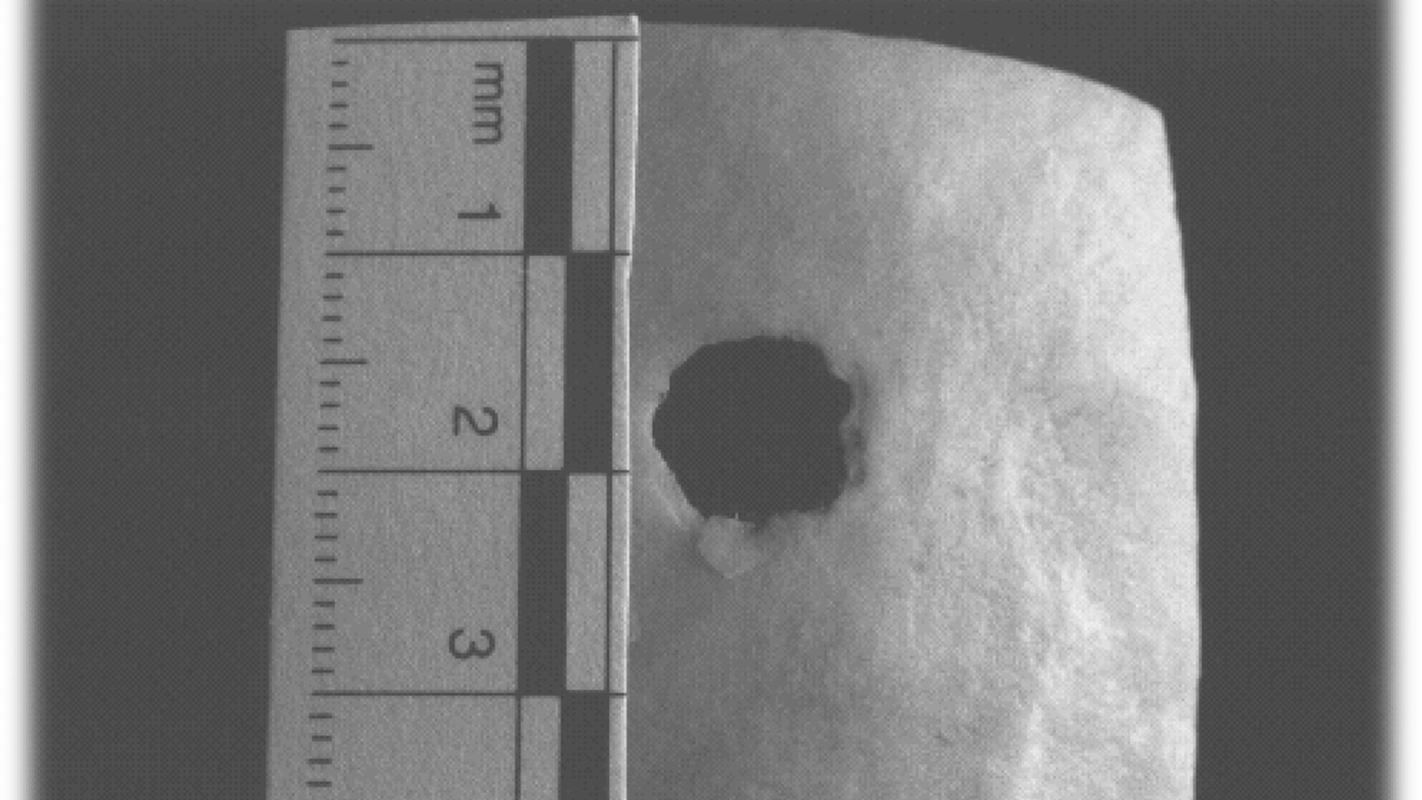Forensic Research Finds Bone Density Affects Size of Bullet Holes

For Immediate Release
A proof-of-concept study from North Carolina State University finds that the density of bones in the skull affects the size of bullet holes in the skull. The finding is useful for law enforcement officials and medical examiners seeking to identify the caliber of firearms that have been used to commit murder.
“Very often, it’s not possible to retrieve bullets in cases where victims have been shot in the head, and determining a bullet’s caliber can be useful during murder investigations,” says Ann Ross, a professor of biological sciences at NC State and senior author of a paper describing the work. Ross is a forensic anthropologist who has worked extensively on forensic investigations in the United States and abroad.
“We wanted to know if the bone density at the site of the wound makes a difference to the size of the bullet hole – and, if so, how that might affect any estimate of the bullet’s caliber,” Ross says.
Previous research by Ross had determined that skull thickness and bullet caliber could affect the size of the “minimum diameter” entry wound in the skull.
For this proof-of-concept study, Ross and undergraduate student Anna Paschall evaluated the bone density of 18 skulls – all had been victims of gunshot wounds to the head – for which the bullet caliber was known.
“Based on this small sub-sample, we found that the strongest correlation was between bone density and minimum diameter size of the entry wound,” Ross says. “The second highest correlation was between bullet caliber and minimum diameter size. That tells us that bone density is an important variable.
“We need to replicate this with a larger sample size, but it’s clearly an important area for future work,” Ross says.
The researchers also found that bone density and skull thickness did not correlate. This is an important observation, because previous research – including Ross’s own work – had used skull thickness as a proxy for density.
Ross and Paschall also looked at minimum diameter wounds in a sample of 169 skulls for which they did not have bone density information. They found that, without that bone density information, minimum diameter size allowed them to estimate whether a bullet was small caliber (up to .32 caliber) or large caliber – but they couldn’t be more specific than that.
“We’re optimistic that, with additional research, we’ll be able to use bone density and minimum diameter to provide much more accurate estimates of bullet caliber to the authorities,” Ross says.
The paper, “Bone mineral density and wounding capacity of handguns: implications for estimation of caliber,” is published in the International Journal of Legal Medicine. Paschall is lead author of the paper. The work was done with support from NC State.
-shipman-
Note to Editors: The study abstract follows.
“Bone mineral density and wounding capacity of handguns: implications for estimation of caliber”
Authors: Anna Paschall and Ann H. Ross, North Carolina State University
Published: July 23, International Journal of Legal Medicine
DOI: 10.1007/s00414-016-1420-6
Abstract: Methodologies that improve estimation of caliber from cranial bone defects are necessary to meet the ever increasing admissibility standards. The relationship between caliber, wound diameter, and bone mineral density (BMD) was examined. The formation of the permanent cavity is influenced by bullet yaw, velocity, distance, and tissue properties. The hypothesis was that including BMD, wound diameter could be explained by differences in caliber. The sample consists of 68 autopsy sections and 101 specimens from Phelps (1898). A subsample of 18 was scanned using dual energy x-ray absorptiometry (DEXA) for BMD measurement to test whether an increase in BMD affects wound diameter. Pearson product-moment correlations of the subsample indicate the strongest correlation is between BMD and minimum diameter (r = 0.7101), followed by a correlation between minimum diameter and caliber (r = 0.6854). Despite the previous use of thickness as a proxy for BMD, no correlation was found between BMD and thickness (r = 0.0143). A multivariate analysis of variance (MANOVA) detected a significant influence of BMD and minimum diameter on caliber size (Prob > F = 0.0003). The logistic regression shows that caliber can be estimated from minimum diameter. Using the subsample, the results show that the inclusion of BMD strengthens the model for estimating caliber from entrance gunshot defects.
- Categories:


